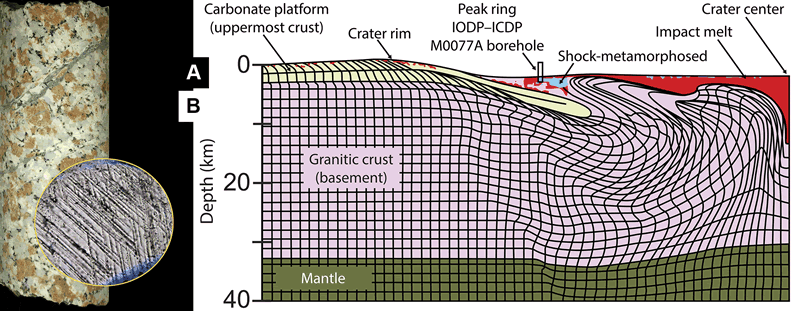
Figure 5.
(A) The Chicxulub peak ring in 83-mm-diameter core is composed of granitic rocks, crosscut with cataclastic and hydrothermal veins, that have also been shock-metamorphosed, as illustrated with planar deformation features with ~5 micron spacing in quartz (inset, with field of view 245 microns wide). Photomicrograph of quartz by expedition scientist Ludovic Ferrière. (B) Granitic basement (pink) was uplifted and then collapsed outward over the pre-impact crust (yellow). The portion of the peak ring sampled in the core also contains shock-metamorphosed (blue) and melted (red) components, which are consistent with a numerical model of dynamic collapse of a central uplift during the crater-forming event (Morgan et al., 2016). While the numerical model treats the basement as a uniform unit of granite, which is the rock type that dominates the new IODP-ICDP core, the basement also contains metaquartzite, mica schist, granitic gneiss, gneiss, amphibolite, dolerite dikes, dacite, felsite, and granodiorite (Kring, 2005; Gulick et al., 2017).